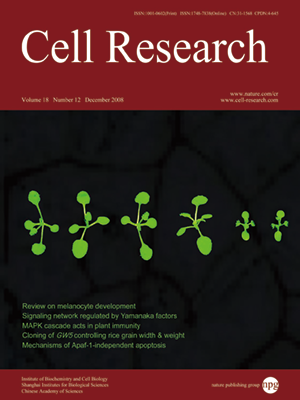
Volume 18, No 12, Dec 2008
ISSN: 1001-0602
EISSN: 1748-7838 2018
impact factor 17.848*
(Clarivate Analytics, 2019)
Volume 18 Issue 12, December 2008: 1163-1176
REVIEWS
Transcriptional and signaling regulation in neural crest stem cell-derived melanocyte development: do all roads lead to Mitf?
Ling Hou1 and William J Pavan2
1Developmental Cell Biology and Disease Program, State Key Laboratory Cultivation Base and Key Laboratory of Vision Science of China Ministry of Health, Eye Hospital, Wenzhou Medical College, 270 Xueyuan Road, Wenzhou, Zhejiang 325003, China
2Genetic Disease Research Branch, National Human Genome Research Institute, National Institutes of Health, Bethesda, MD 20892, USA
Correspondence: Ling Hou,(lhou@mail.eye.ac.cn)
Human neurocristopathies include a number of syndromes, tumors, and dysmorphologies of neural crest (NC) stem cell derivatives. In recent years, many white spotting genes have been associated with hypopigmentary disorders and deafness in neurocristopathies resulting from NC stem cell-derived melanocyte deficiency during development. These include PAX3, SOX10, MITF, SNAI2, EDNRB, EDN3, KIT, and KITL. Recent studies have revealed surprising new insights into a central role of MITF in the complex network of interacting genes in melanocyte development. In this perspective, we provide an overview of some of the current findings and explore complex functional roles of these genes during NC stem cell-derived melanocyte development.
Cell Research (2008) 18:1163-1176. doi: 10.1038/cr.2008.303; published online 11 November 2008
FULL TEXT | PDF
Browse 2148


